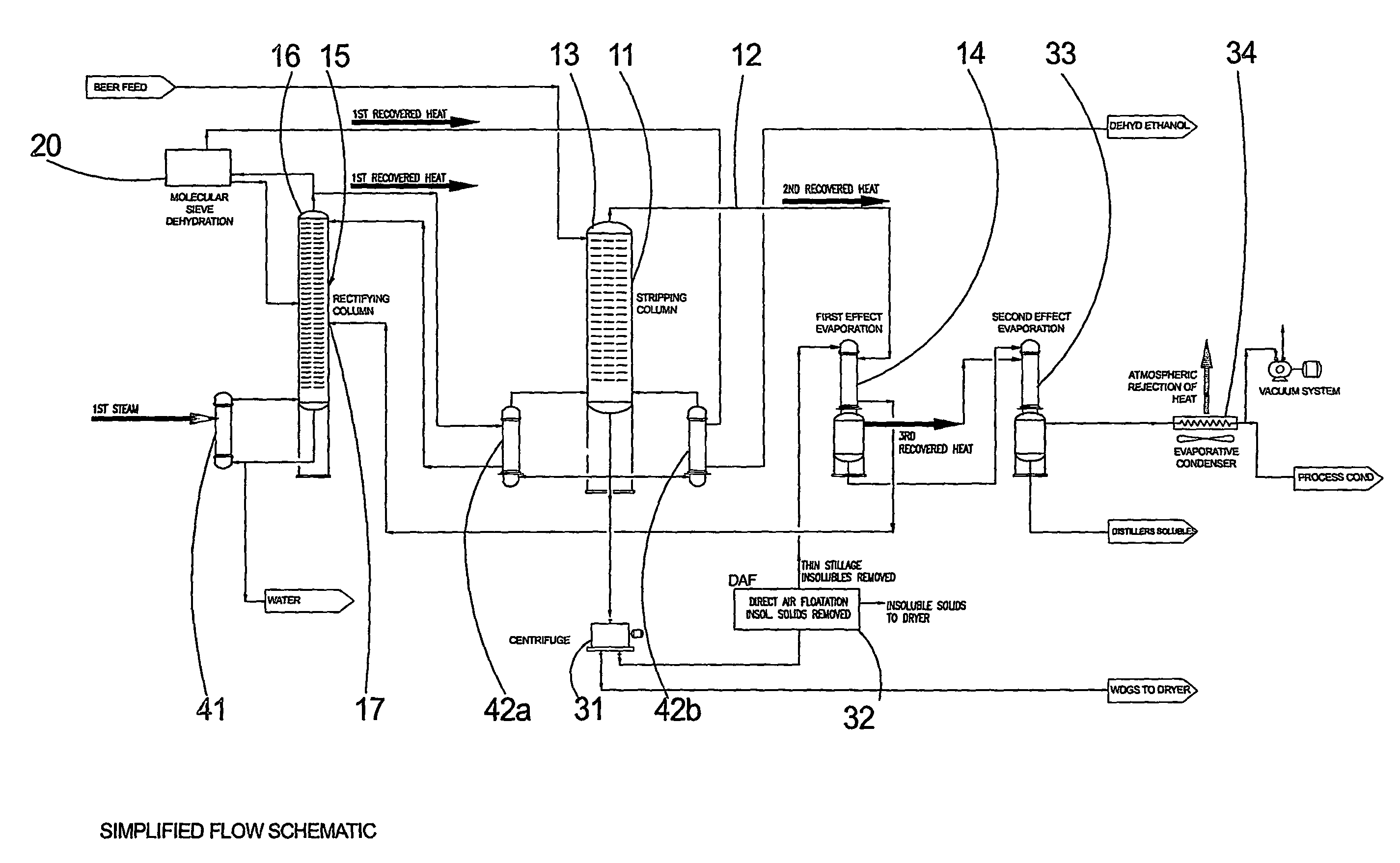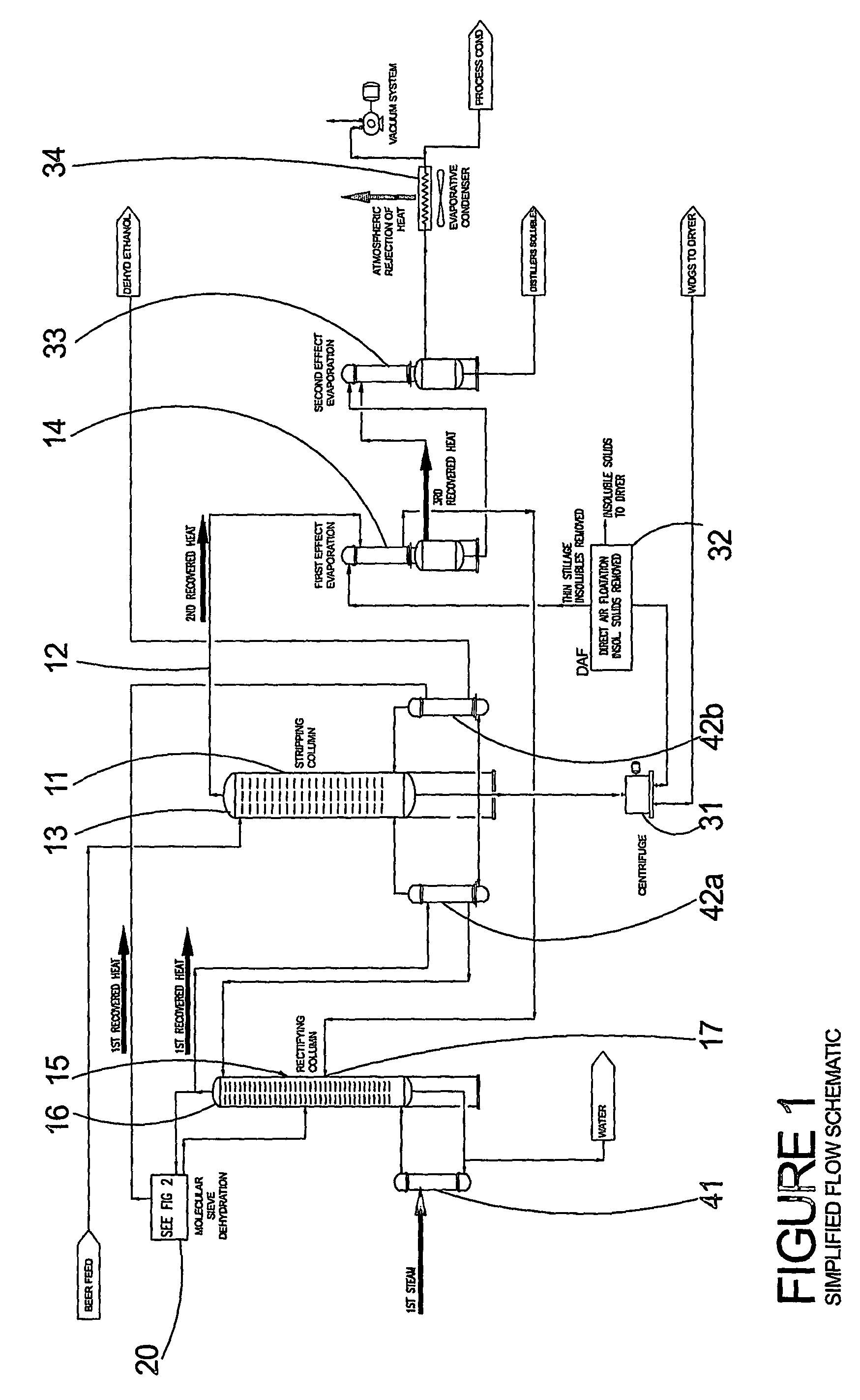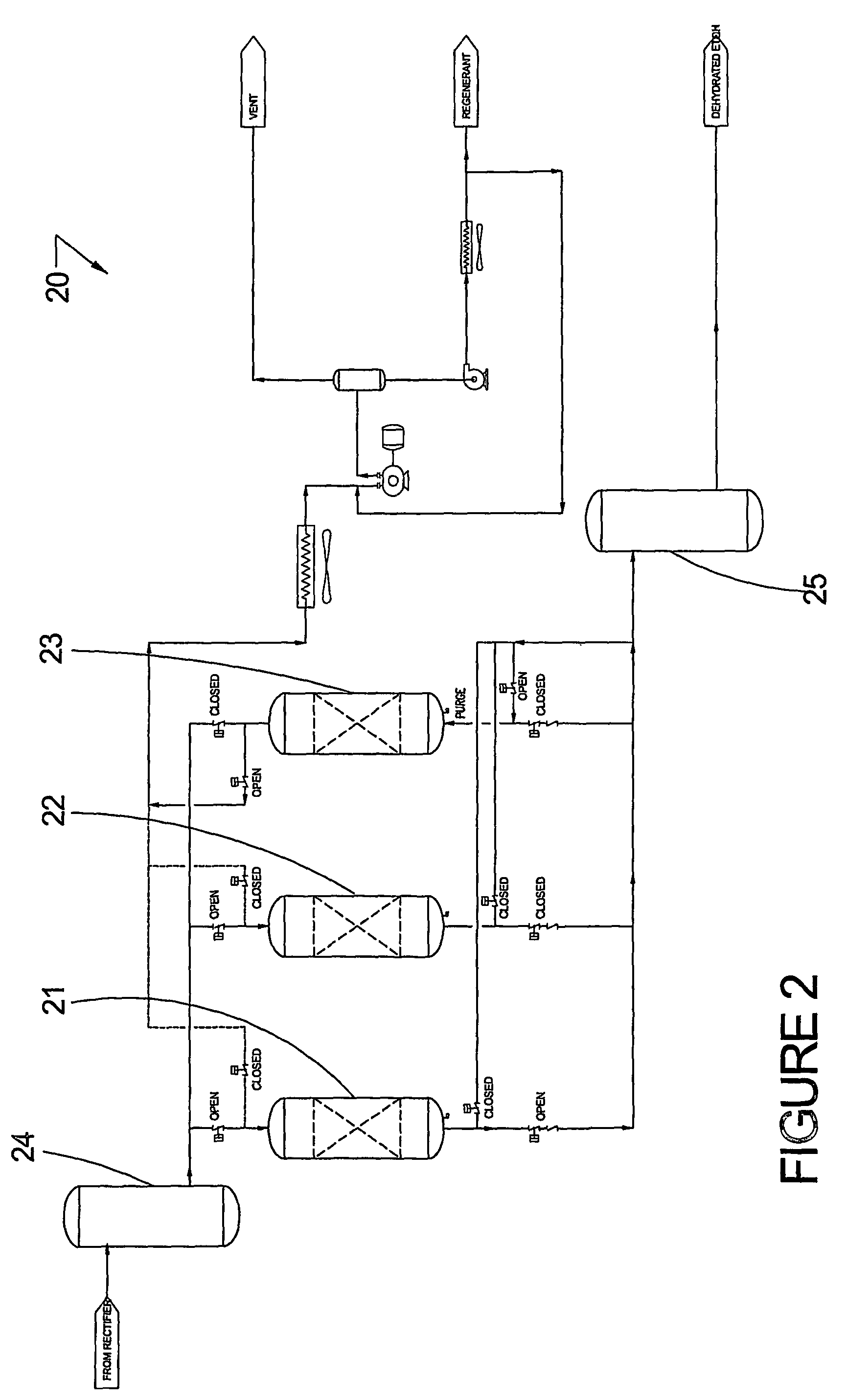Ethanol distillation with distillers soluble solids recovery apparatus
a recovery apparatus and distillation technology, applied in the direction of drying solid materials, drying solid materials, oxygen compound purification/separation, etc., can solve the problems of high energy expenditure, difficult operation, and high concentration of ethanol, and achieve the effect of improving the heat recovery of the adsorption dehydration operation
- Summary
- Abstract
- Description
- Claims
- Application Information
AI Technical Summary
Benefits of technology
Problems solved by technology
Method used
Image
Examples
Embodiment Construction
[0040]FIG. 1 shows an embodiment of the ethanol plant of the present invention which includes a stripping column, 11 into which a stream of fermented beer is provided and which produces an intermediate concentration ethanol (35-65%) mixture 12 at the top of the stripping column 13 which is then provided to the first effect evaporator 14, condensed, is then provided to the rectifying column 15 which produces a concentrated ethanol mixture of at least eighty percent to ninety-five percent (85% to 95%) at the top of the rectifying column 16 after having been supplied with the stripping column intermediate product at the middle of the rectifying column 17. The concentrated ethanol product from the rectifying column is provided to the dehydration system 20 which has (as shown by FIG. 2), in parallel operation, a first molecular sieve bed 21. The second molecular sieve bed 22 and a third molecular sieve bed 23 and accumulator intake holding tank 24 into which the rectifying column product...
PUM
| Property | Measurement | Unit |
|---|---|---|
| size | aaaaa | aaaaa |
| size | aaaaa | aaaaa |
| temperature | aaaaa | aaaaa |
Abstract
Description
Claims
Application Information
 Login to View More
Login to View More - R&D
- Intellectual Property
- Life Sciences
- Materials
- Tech Scout
- Unparalleled Data Quality
- Higher Quality Content
- 60% Fewer Hallucinations
Browse by: Latest US Patents, China's latest patents, Technical Efficacy Thesaurus, Application Domain, Technology Topic, Popular Technical Reports.
© 2025 PatSnap. All rights reserved.Legal|Privacy policy|Modern Slavery Act Transparency Statement|Sitemap|About US| Contact US: help@patsnap.com



